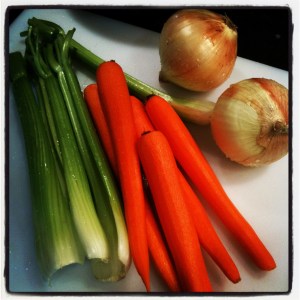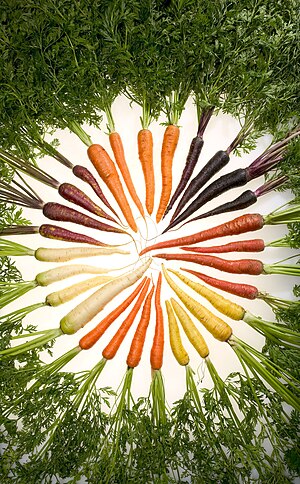Who doesn’t love great tasting food?
Honestly, I think it is really strange when people profess to be a foodie. We all love food don’t we? We all need it to survive. But there is a big difference between loving food and exercising self-control in the process to not cross that fine line that leads to gluttony. Please don’t tell me you are a foodie. Remember that the pleasure we derive from eating is not the primary goal – nourishment is. Nourishment and pleasure must go together; they feed each other (excuse the pun). 🙂
My eight year old daughter discovered Butter Chicken this past year and though she only eats a small amount (she only ever eats a small amount of anything), but is a discerning eater who eats slowly and savours her food. But because dairy doesn’t work well for her I decided that I would experiment in the kitchen and come up with a “Butter Chicken” that she could eat with confidence!
I have been experimenting with Eat Right 4 Your Type for the last few years and so have made modifications to this fantastic Butter Chicken recipe, to suit my needs. It works well for the rest of my family too (give or take some ingredients); each of us, a representative of the four blood types!
My version is for those who are dairy-free. I know it sounds strange to even call this dish Butter Chicken when there is no butter or decadent cream and by the way there is no chicken either; I have replaced the chicken with Turkey cutlets. My son is blood type B and my husband is blood type AB, both should avoid chicken. Generally, chicken is so over consumed by everyone that I have cut back on the amount of chicken I prepare and serve to them at home. So turkey it is!
I have made this dish only three or four times, but it has turned out great each time, so I feel ready to share it with you. If you try it please let me know how it turns out. My son thinks it could use a little more garlic and ginger for his taste, so I will experiment with those quantities next time.
Also, I find that it tastes even better the following days; I always make enough for leftovers.
Make this ginger / garlic paste ahead of time. Here’s how: chop up at least 2 inches of fresh ginger and 3 to 4 cloves of garlic to make a generous 1-2 Tablespoons of chopped fresh ginger and garlic each; equal parts. But often when using a food processor it helps to have a larger quantity being processed for the machine to run smoothly. This is why I generally make more and keep it in the freezer. Place into a small food processor and add water in small amounts to create a paste. Set aside in the refrigerator or freezer depending on when you will be making the recipe.
Ingredients:
- 1 kg boneless Turkey Cutlets
- 1/4 Cup freshly squeezed lime juice
- 1/8 tsp sea salt
- 1 generous tsp red chili flakes
- 2 dried Bay Leaves
- 10 raw almonds
- 4 pods of cardomom
- 2 tsp coriander powder
- 1 tsp cumin powder
- 1/4 tsp turmeric powder
- 3 TBSP Olive Oil
- 1 Cup or more of chopped yellow or Sweet cooking onions
- 2 – 3 tsp (or more) of garlic/ ginger paste (see above)
- 1- 14 oz. Can of unsalted diced Tomatoes
- 1 TBSP dried Fenugreek Leaves (kasuri methi)
- 2 Cups homemade Turkey stock (or chicken or vegetable stock)
Instructions:
 1 kg boneless Turkey cutlets cubed (a cutlet is a breast cut in half or more slices) I use kitchen food scissors for cutting the cutlets into cubes.
1 kg boneless Turkey cutlets cubed (a cutlet is a breast cut in half or more slices) I use kitchen food scissors for cutting the cutlets into cubes.
- 1/4 Cup freshly squeezed lime juice (approximately from 1 lime depending on juiciness)
- 1/8 tsp sea salt
- 1 generous tsp red chili flakes
1) Combine the above ingredients. Place into a non-reactive (choose glass) food safe container and cover with a lid. (I like Frigoverre by Bormioli Rocco). Refrigerate for 1 hour.
2) Just before your hour is up, in a flat pan on medium heat, gently roast:
- 2 dried Bay Leaves
- 10 raw almonds

3) Gently roast until they darken slightly, turning over occasionally. Remove from heat and allow to cool for a few minutes.
- Remove seeds from 4 pods of cardomom (there are 12 seeds in each pod).
4) In a clean coffee grinder, place cooled roasted bay leaves, almonds and 48 cardamom seeds and grind into a coarse powder.
5) In a small bowl combine the following spices:
- 2 tsp coriander powder
- 1 tsp cumin powder
- 1/4 tsp turmeric powder
6) Mix the coarse powder mixture with the above spices (coriander, cumin, turmeric)
7) Add this combined spice mixture to the marinating Turkey cubes. Mix well.
8) Continue to marinate Turkey for an additional hour, covered in the refrigerator.
AFTER the second 1 Hour (two hours total), remove marinating Turkey from the refrigerator. It’s cooking time.
9) Heat 3 TBSP Olive Oil, on medium heat in a large high-sided frying pan or pot.
*NOT Virgin or Extra Virgin Olive Oil, because these oils are not meant for cooking with.
10) When the Olive Oil is hot add approximately 1 Cup of chopped yellow or Sweet cooking onions. Fry until golden brown. About 10 minutes.
11) Add 2 generous teaspoons of previously prepared garlic/ ginger paste. Fry for one minute.
12) Add marinated Turkey cubes and any juices that may have collected in the marinating container. Cook on medium until Turkey cubes have sealed; they will take on an opaque appearance.
Simultaneously…
- 1- 14 oz. Can of unsalted diced Tomatoes
- 1 TBSP dried Fenugreek Leaves (kasuri methi)
13) With a food processor or in a container using a hand held blender, ground the tomatoes and fenugreek leaves into a smooth paste. Add to pot and combine with Turkey.

14) Add 2 Cups Turkey stock to pot and combine. 
15) Cook until Turkey is cooked and sauce is reduced by half. (approximately 45 minutes total cooking time.)
OPTIONAL: I don’t do this but as an optional Butter addition, melt 3 TBSP Butter or Ghee in another pot, then pour over top of cooked Turkey and mix in to finish.
Serve with homemade steamed Cumin Basmati Rice (easy recipe to follow – one of these days) and fresh steamed or roasted vegetables.
ENJOY!
Here are the instructions without photos for easy reading:
1) Combine the above ingredients. Place into a non-reactive (choose glass) food safe container and cover with a lid. (I like Frigoverre by Bormioli Rocco). Refrigerate for 1 hour.
2) Just before your hour is up, in a flat pan on medium heat, gently roast: 2 dried Bay Leaves and 10 raw almonds
3) Gently roast until they darken slightly, turning over occasionally. Remove from heat and allow to cool for a few minutes.
- Remove seeds from 4 pods of cardomom (there are 12 seeds in each pod).
4) In a clean coffee grinder, place cooled roasted bay leaves, almonds and 48 cardamom seeds and grind into a coarse powder.
5) In a small bowl combine the following spices:
- 2 tsp coriander powder
- 1 tsp cumin powder
- 1/4 tsp turmeric powder
6) Mix the coarse powder mixture with the above spices (coriander, cumin, turmeric)
7) Add this combined spice mixture to the marinating Turkey cubes. Mix well.
8) Continue to marinate Turkey for an additional hour, covered in the refrigerator.
AFTER the second 1 Hour (two hours total), remove marinating Turkey from the refrigerator. It’s cooking time.
9) Heat 3 TBSP Olive Oil, on medium heat in a large high-sided frying pan or pot.
*NOT Virgin or Extra Olive Oil, because these oils are not meant for cooking with.
10) When the Olive Oil is hot add approximately 1 Cup of chopped yellow or Sweet cooking onions. Fry until golden brown. About 10 minutes.
11) Add 2 generous teaspoons of previously prepared garlic/ ginger paste. Fry for one minute.
12) Add marinated Turkey cubes and any juices that may have collected in the marinating container. Cook on medium until Turkey cubes have sealed; they will take on an opaque appearance.
Simultaneously…
- 1- 14 oz. Can of unsalted diced Tomatoes
- 1 TBSP dried Fenugreek Leaves (kasuri methi)
13) With a food processor or in a container using a hand held blender, ground the tomatoes and fenugreek leaves into a smooth paste. Add to pot and combine with Turkey.
14) Add 2 Cups Turkey stock to pot and combine.
15) Cook until Turkey is cooked and sauce is reduced by half. (see feature photo above).
OPTIONAL: I don’t do this but as an optional Butter addition, melt 3 TBSP Butter or Ghee in another pot, then pour over top of cooked Turkey and mix in to finish.
Serve with homemade steamed Cumin Basmati Rice (easy recipe to follow – one of these days) and fresh steamed or roasted vegetables.



































































































